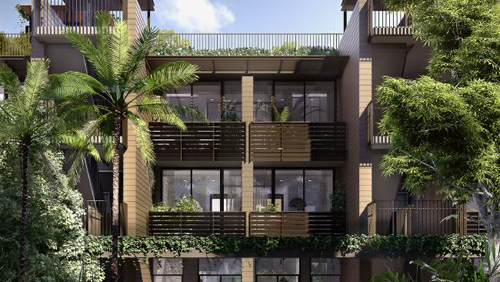The Finery at Sydney’s Waterloo, developed by a joint venture made up of an Australian
company and leading Chinese insurance company Ping An.
China’s powerful state-owned enterprises are tipped to become the major driving force in overseas real estate investment in Australia following major reforms ordered by the Chinese government to clean up the troubled sector and encourage these groups to invest abroad.
The SOEs spent $US7.4 billion in Australia last year in 13 deals that primarily centred on the commercial property market.
The headline real estate deal last year was China’s Investment Corporation’s move to spend $2.45bn on the Investa office fund, while Sunshine Insurance has focused its sights over the past two years on the $463 million purchase of Sydney’s Sheraton on Park and a Hunter Valley golf course.
Australia is the second largest recipient of China’s total outbound investment, worth $US12.2bn last year, placing it behind the US.
It is forecast that a growing number of SOEs, which are owned by the Chinese government, will expand ambitiously overseas because of a strict crackdown led by President Xi Jinping.
Mr Xi has outlined a plan to clean up the SOE sector, which has been plagued by corruption and low returns, and ordered that the companies should be growing outside of China.
HSBC Australia’s China desk head, Leon Li, said Australia was a natural investment location for SOEs embarking on an international expansion plan.
“Australia, for the past decade, has been the second most popular destination for Chinese outbound investment and with the free trade agreement coming into place, that trend is going to continue,” Mr Li said.
“With SOEs there is the view that Australia is a good testing ground in terms of the companies that are looking to grow overseas. I don’t think there’s anything that is going to hold back that investment. The SOEs are being encouraged by the government to diversify their operations abroad; they want to build a up a strong ‘China brand’ but not just be known only in China.”
KPMG Asian and international markets partner Doug Ferguson said China’s cashed-up insurance groups and sovereign wealth funds would probably start investing heavily in Australian real estate as mainland domestic property markets remain volatile. Property prices in China’s second and third tier cities, outside of the major provinces, have experienced double-digit price falls in the past three years and are plagued by oversupply of high density residential developments.
“There’s still a question mark over some of the SOEs in terms of their financing, access to capital markets and their willingness to take the big decision to invest offshore,” Mr Ferguson said.
“There’s been a pronounced rebalancing in the decisions that Chinese investors are making when it comes to real estate. We have seen some big groups looking to find big projects that they can develop themselves and I think that will continue.
“In terms of future SOE investment in Australia, it is more likely to come from the big insurance groups and the sovereign wealth funds that I think will be very noticeable in the next year.”
Ping An, the insurance group considered one of China’s largest private companies, signed a joint venture last year to develop a residential project in Sydney’s inner-city Waterloo made up of 226 units and a retail centre.
The Australian
Please
contact us in case of Copyright Infringement of the photo sourced from the internet, we will remove it within 24 hours.
